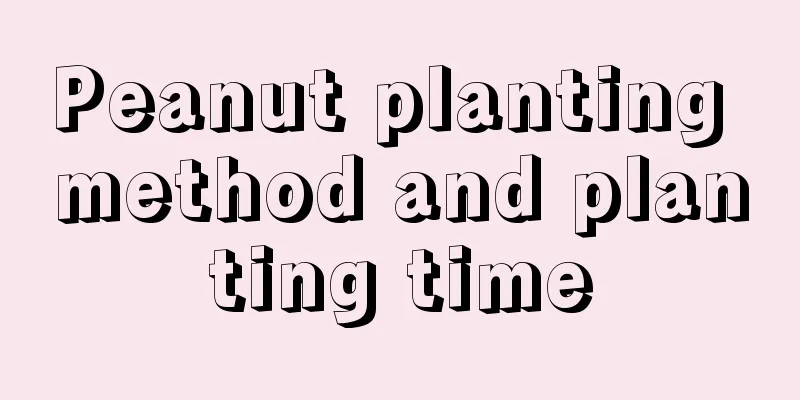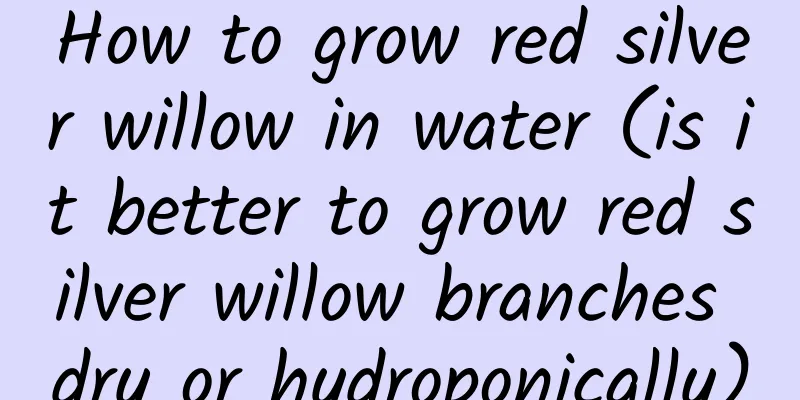Peanut planting method and planting time

|
Peanut is an annual or perennial herb. Its fruit is a pod, commonly known as peanut kernel. When ripe, the pod will drill into the soil. Peanuts like light and have high photosynthesis efficiency. They have certain requirements for light intensity and length of sunshine. Let’s learn about peanut planting methods and planting time. 1. Plot selection and preparation Peanuts prefer sandy soil with good drainage and are sensitive to salt and alkali. It is best to plant them on fertile land that has not been planted with peanuts for many years to avoid continuous cropping. It is recommended to rotate with crops such as sweet potatoes, corn, and rice, but not with leguminous crops to reduce the risk of diseases. The suitable soil pH value is 7.0, which is conducive to root development and quality assurance. 2. Seed treatment Choose disease-resistant high-quality seeds and sun-dry them for 1 to 2 days before shelling to remove diseased, shriveled, and residual kernels and increase the germination rate. When sowing, select seeds with full grains, free of disease and mildew, dilute with 75% methyl thiophanate and mix with the seeds, and sow after drying to ensure that the seedlings are neat and strong and enhance disease resistance. 3. Sowing The best sowing period is from April to May, when the temperature rises above 10℃ and there is sufficient sunlight, which is conducive to germination. Summer sowing of peanuts is about 10 days before or after wheat harvest. The sowing rate is 15 to 18 kg/mu, and the hole depth is about 5 cm. After the seedlings emerge, check and replant to prevent missing seedlings and broken ridges. 4. Water and Fertilizer Management 1. Water management Peanuts like warmth and require strict water management. Water less during the seedling stage as drought can promote root development and improve drought and flood resistance. It is sensitive during the flowering needle and pod-setting stages, and water promptly when the leaves wilt. When the plant is dry during the fruit-bearing period, add water in time. Water before 10 am or after 5 pm to avoid sudden changes of cold and hot weather. 2. Fertilization management Peanuts require trace elements such as potassium, phosphorus, calcium, molybdenum, and boron, and farmyard manure, compound fertilizer , phosphorus fertilizer, and potassium fertilizer are used as base fertilizer. Peanut rhizobia produce nitrogen on their own, so nitrogen fertilizer should not be used excessively. It should be used as tillage fertilizer, seed fertilizer, or topdressing in the seedling stage to prevent excessive growth. Spray trace elements in the early stage of flowering to improve disease resistance and stress resistance. 5. Field Management Strengthen field management and carry out tillage and weeding in a timely manner. The cotyledons are exposed when there are two leaves, which promotes leaf growth and flower bud differentiation. When the plant is 30 to 35 cm tall, use growth regulators to control excessive growth and spray the leaves. 1. Seedling stage Clear the plants and squat the seedlings. For flat sowing, hoe shallowly between the rows. For ridge sowing, hoe deep in the furrows. Clear the plants and expose the cotyledons. Be careful not to knock off the cotyledons. After clearing the plants, wait until the seedlings are stable before tilling the soil. 2. Seedling stage Regulate water and fertilizer during the seedling stage to promote root growth and balance nutrition and reproductive growth. Water less during the seedling stage and keep the environment appropriately dry to promote root growth. During the 3 to 5 leaf stage, apply 5 kg of urea to promote growth. 3. Flowering and pod-setting period Cultivate and build up the soil to prevent lodging, shorten the distance between the fruit needles and the ground, and promote the plunging of the fruit needles and the development of pods. Water and fertilizer management: water in time when the leaves wilt. During the flowering period, the roots form nodules and produce nitrogen. No nitrogen fertilizer is applied after flowering. Timely chemical control, the best time is about 30 days after flowering, control the dosage, focus on spraying the growth point, the ideal plant height is 30 to 40 cm. VI. Pest and disease control The main peanut diseases include stem rot and crown rot, which can be effectively controlled by pyraclostrobin. The main pests include white grubs, etc., which can be effectively controlled by thiamethoxam. Mixing the two with seeds can significantly increase their effectiveness. 7. Harvest at the right time The peanuts are harvested when the shells are hardened, the shell walls have blue-brown spots, and the kernels are full. If it is too late, the pods will easily fall off and will be difficult to harvest. The above are the key points of peanut cultivation. As an economic crop with multiple uses, peanuts have a wide planting area. If you want to achieve high yields, mastering technology is the key.
|
<<: Planting technology and cultivation management of Atractylodes lancea
>>: Loofah planting method and planting time
Recommend
How to water Milan flowers? This way of watering will make them more fragrant than others!
Water requirement The first thing we need to know...
What is the flower-raising white medicine?
1. What is The small white medicine used for grow...
How many pounds of strawberry are produced per acre?
Strawberry yield per mu Strawberries usually star...
When is the best time to plant peonies?
Peony is famous for its enchanting flower posture...
The green ivy is 100 meters tall, and the spider plant is producing baby babies like crazy. What did the neighbor feed it?
Pothos 1. Fertilization If you want your green ra...
How to grow succulent mirror
1. Breeding environment 1. Soil: The succulent pl...
How to reproduce woolly rhododendron
Cuttings This method is quite common and practica...
How to grow lavender
1. Seed processing When planting, choose seeds wi...
Does the copper green unicorn need to be watered thoroughly?
1. Does it need to be watered thoroughly? When wa...
How to grow Devil's Ivy
1. Breeding environment 1. Soil: When growing dev...
How to grow windmill jasmine in winter, and what degree of cold temperature can it withstand?
1. How many degrees can it withstand Windmill jas...
The best time to plant sugar beets: planting techniques and sowing time
Beet planting time Sugar beets can only be plante...
How to grow jasmine
1. Environment Jasmine is a plant that likes the ...
How to grow Verbena in autumn
1. Autumn maintenance is very important Autumn ca...
The leaves of the succulent plants are wrinkled. If you continue to water them like this, they won’t survive more than 3 days!
Why are fleshy plants wrinkled? The wrinkled leav...









